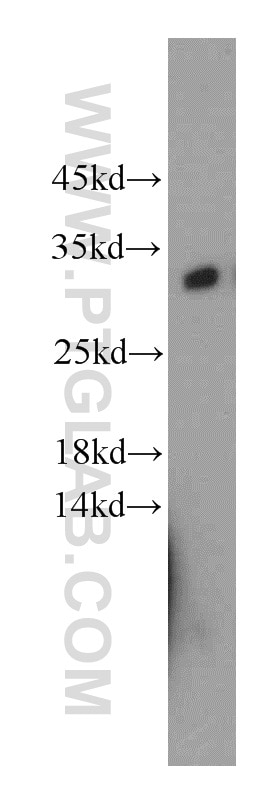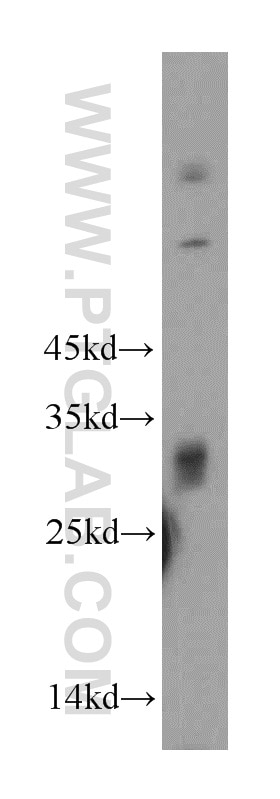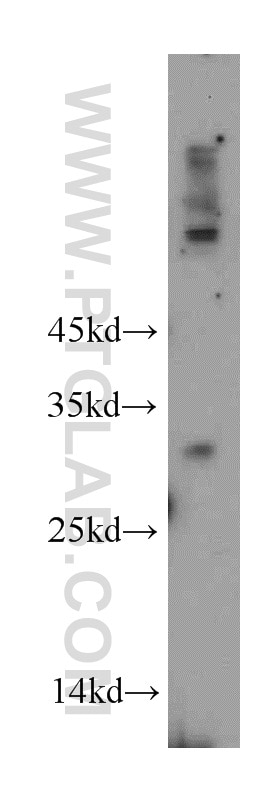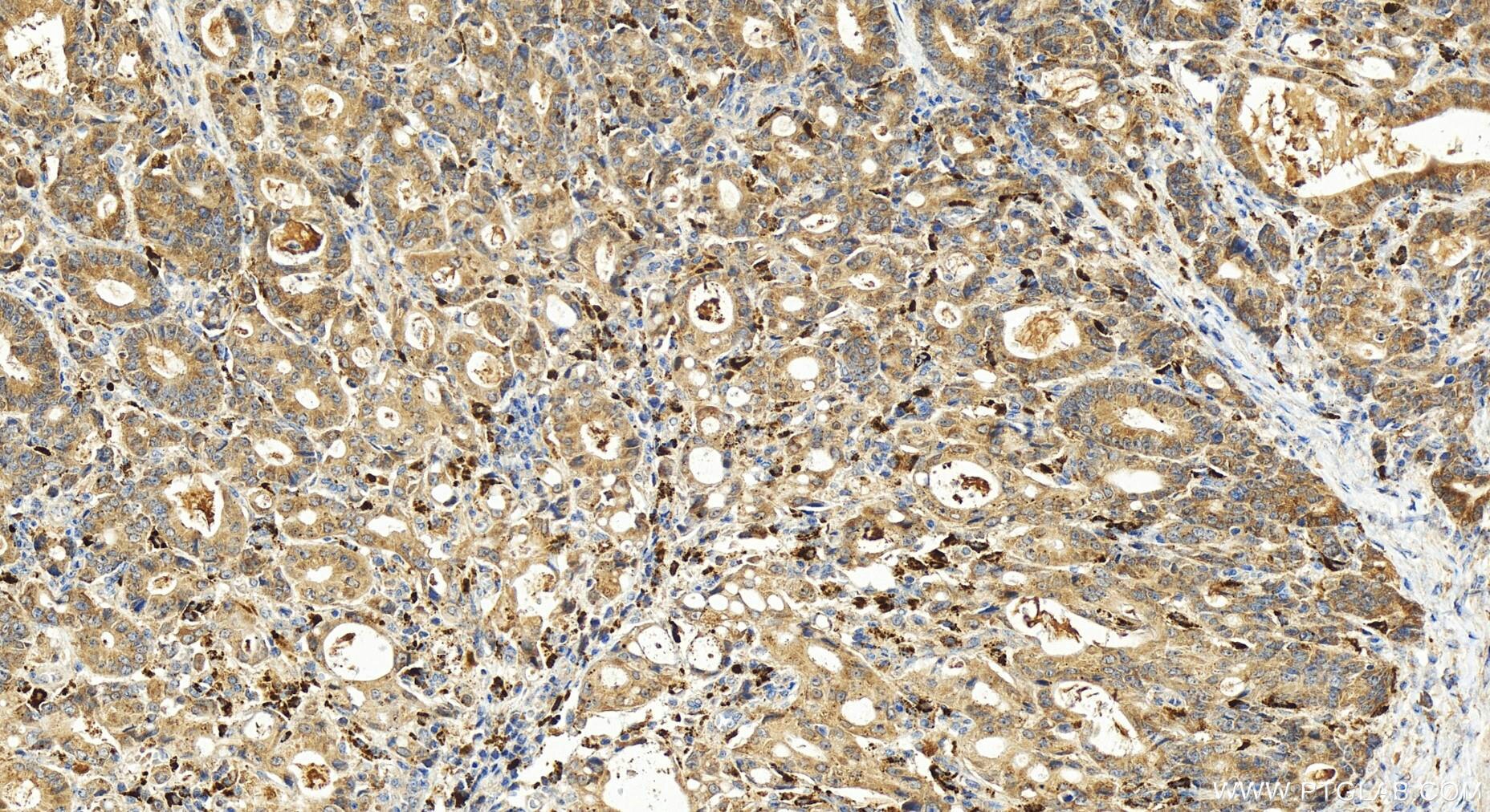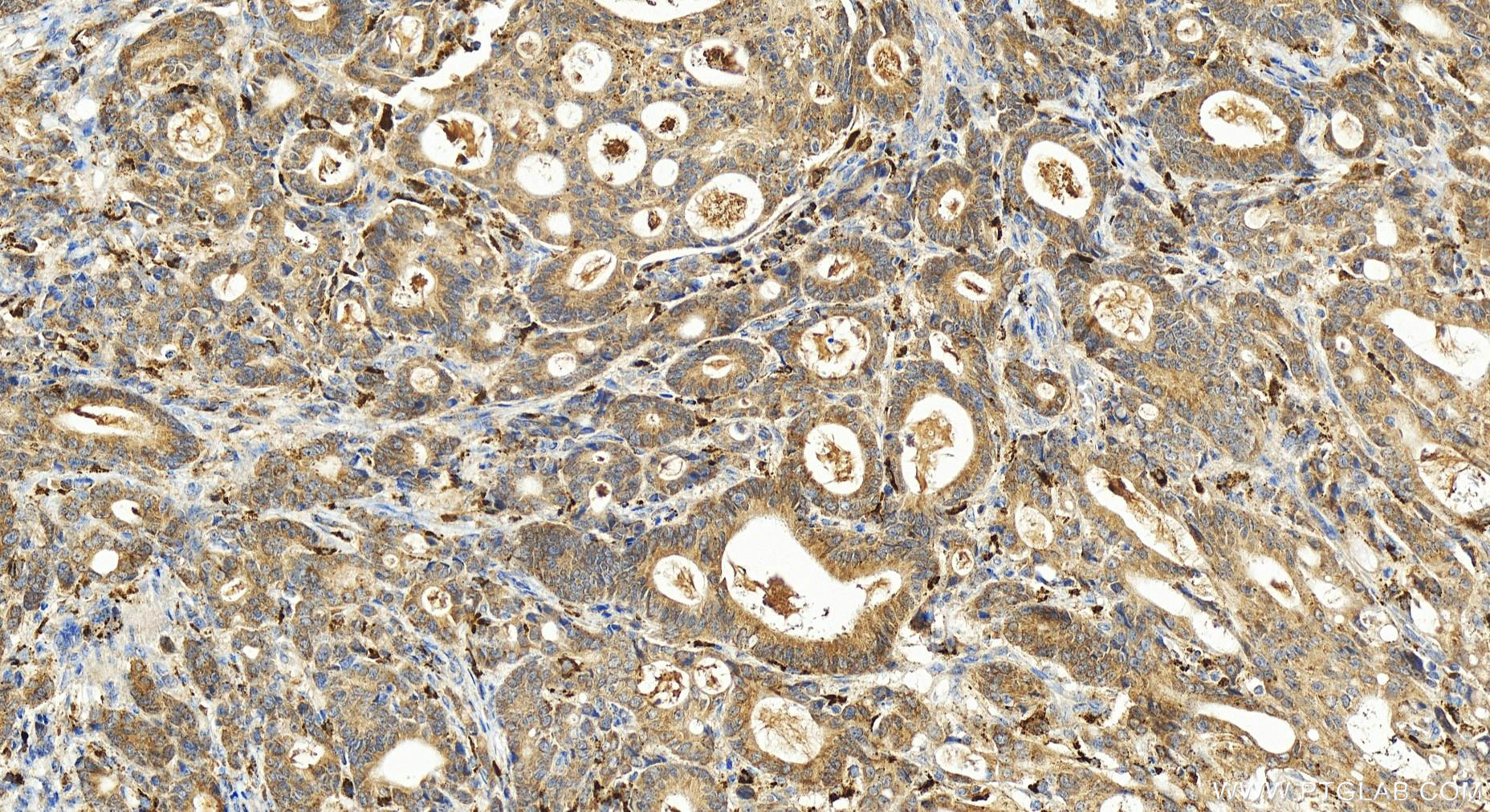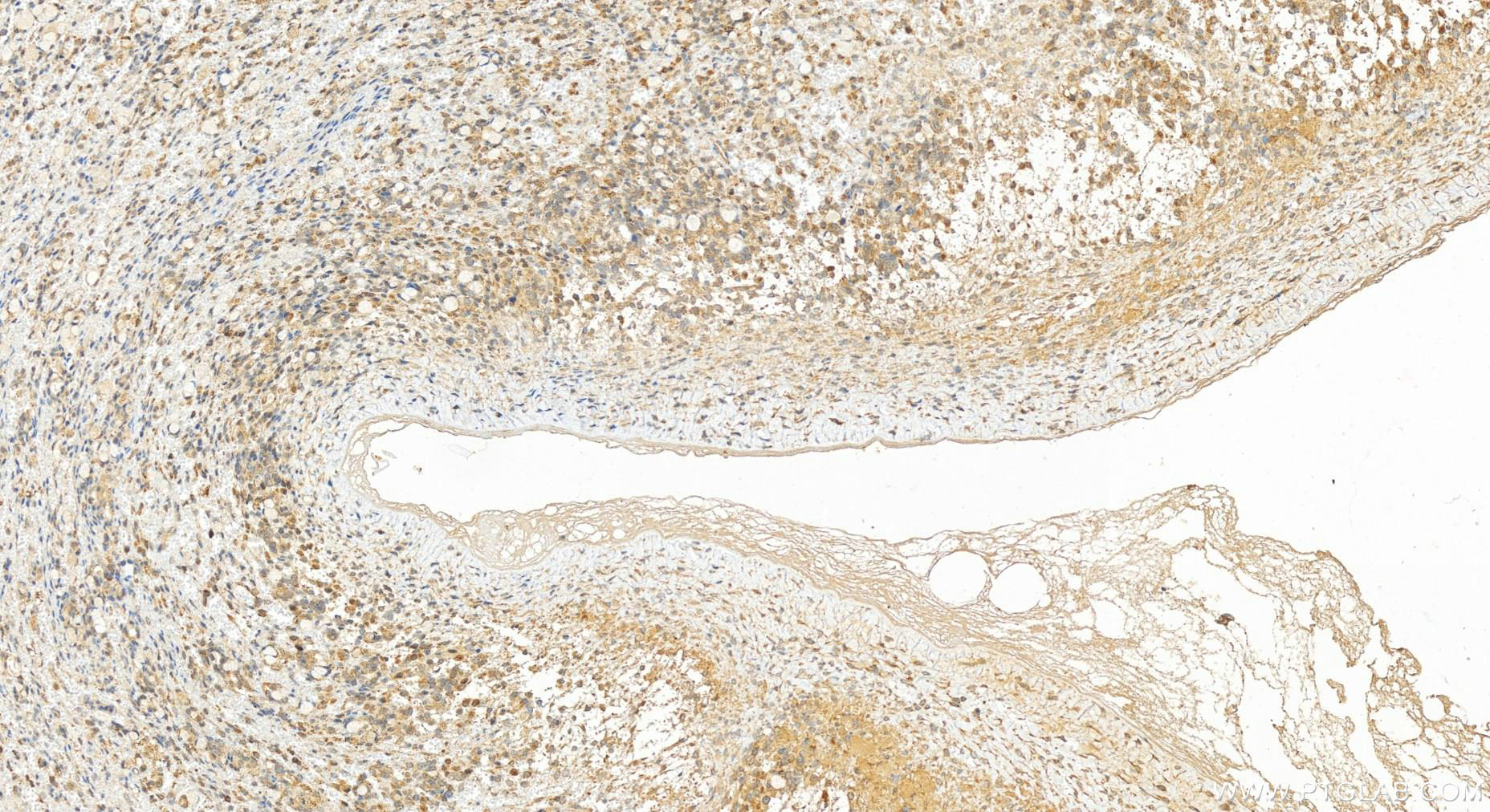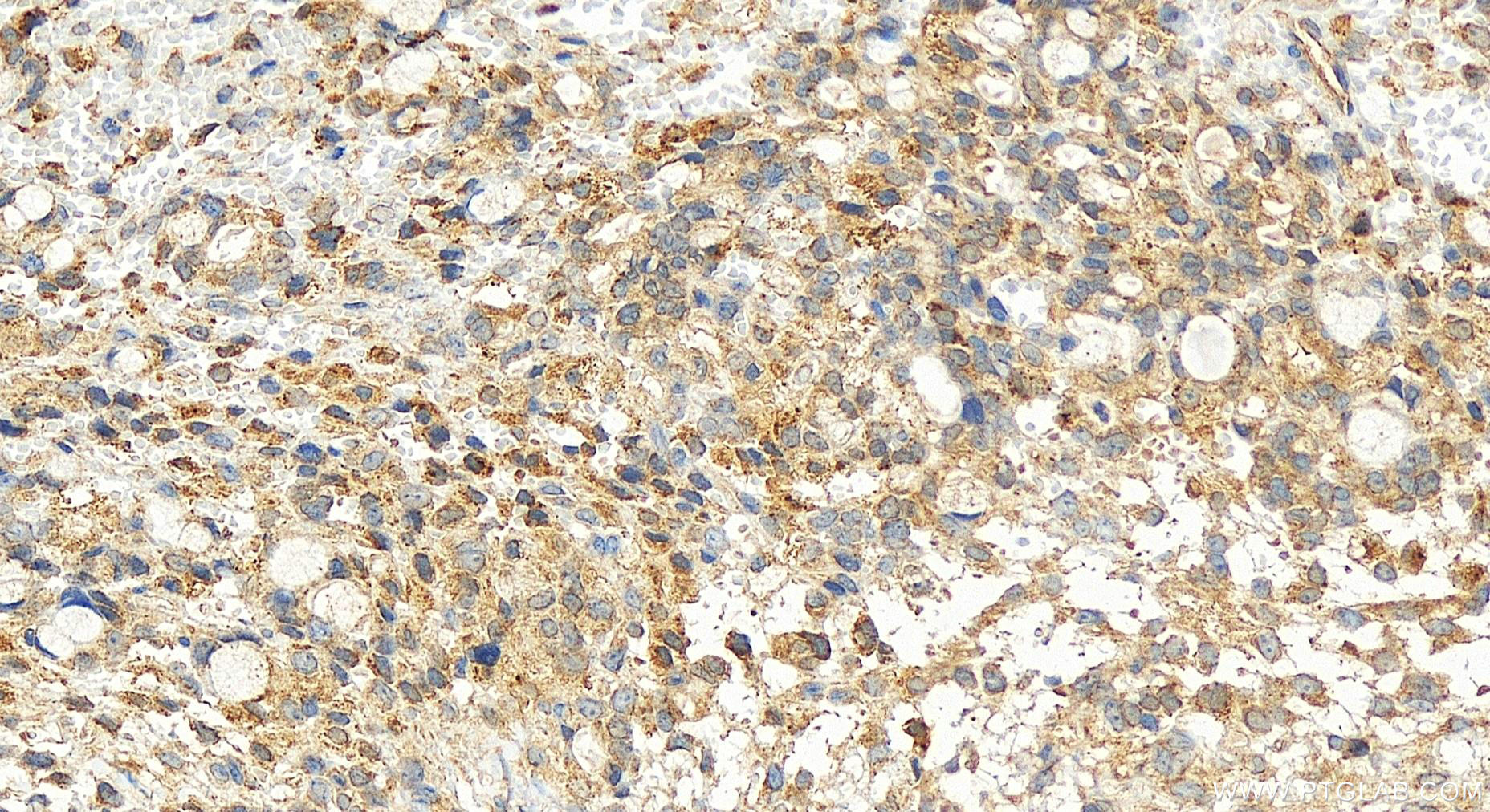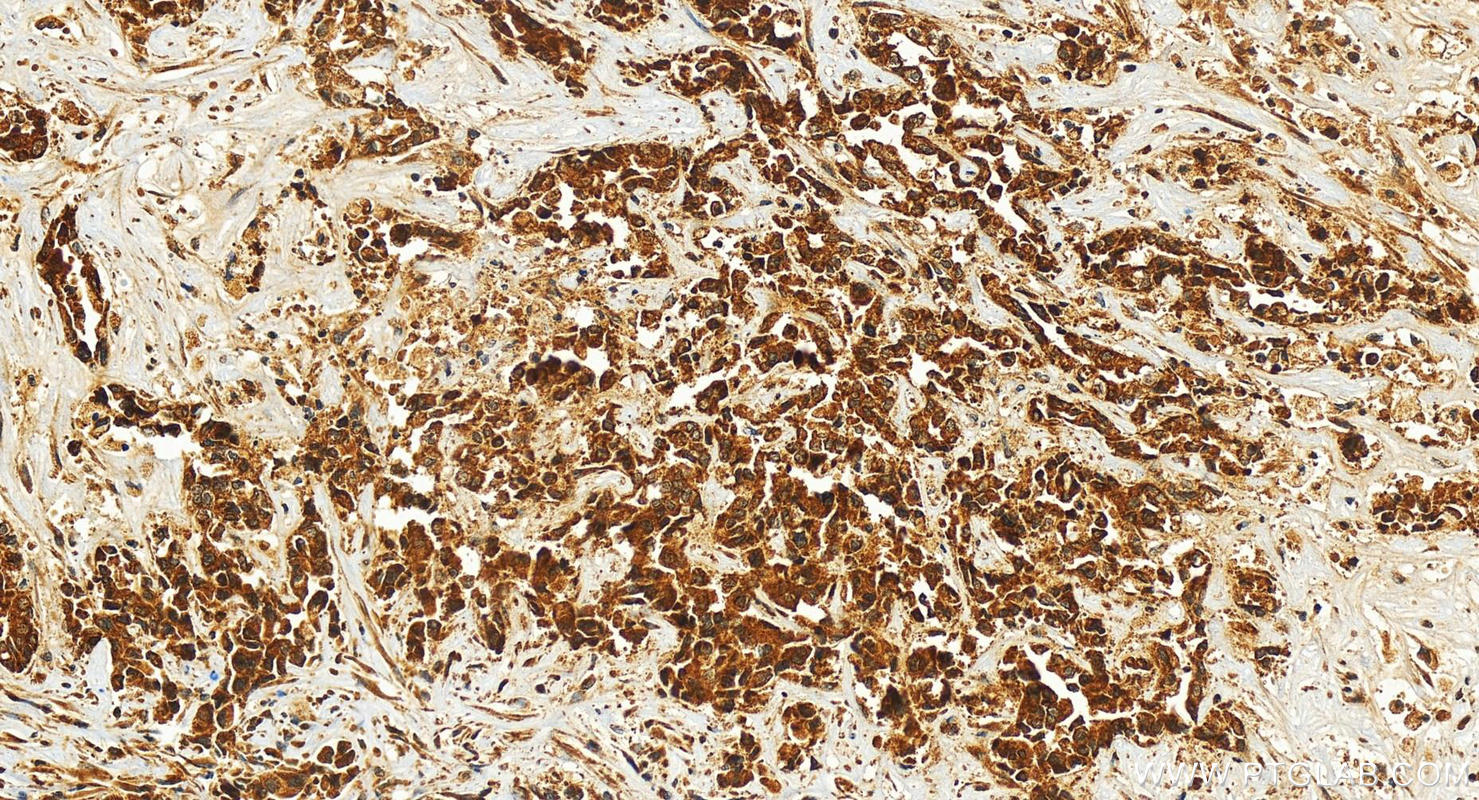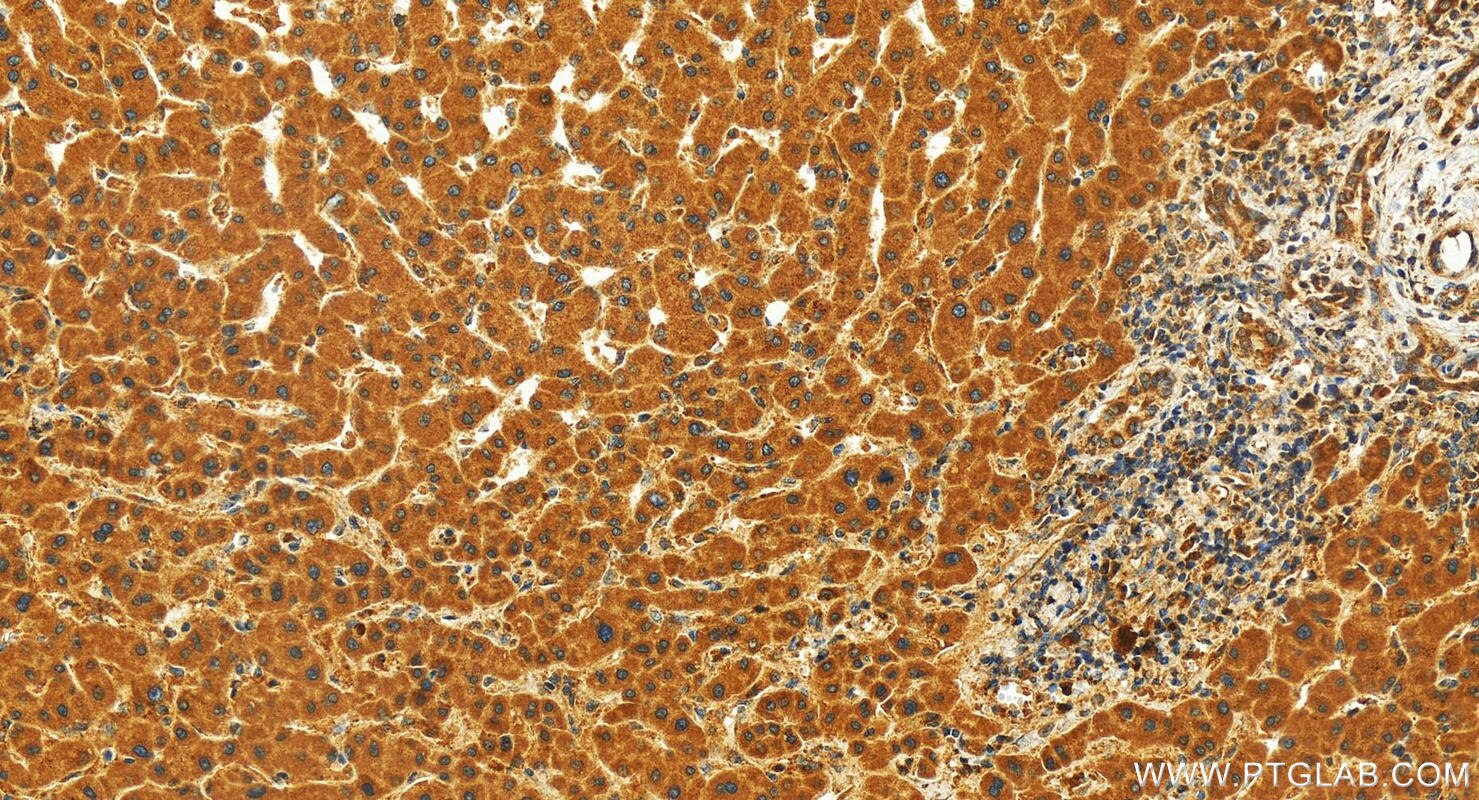Tested Applications
| Positive WB detected in | mouse skeletal muscle tissue, mouse brain tissue, mouse small intestine tissue |
| Positive IHC detected in | human stomach cancer tissue, human intrahepatic cholangiocarcinoma tissue, human ovary cancer tissue Note: suggested antigen retrieval with TE buffer pH 9.0; (*) Alternatively, antigen retrieval may be performed with citrate buffer pH 6.0 |
Recommended dilution
| Application | Dilution |
|---|---|
| Western Blot (WB) | WB : 1:500-1:2000 |
| Immunohistochemistry (IHC) | IHC : 1:50-1:500 |
| It is recommended that this reagent should be titrated in each testing system to obtain optimal results. | |
| Sample-dependent, Check data in validation data gallery. | |
Product Information
21111-1-AP targets KCTD14 in WB, IHC, ELISA applications and shows reactivity with human, mouse samples.
| Tested Reactivity | human, mouse |
| Host / Isotype | Rabbit / IgG |
| Class | Polyclonal |
| Type | Antibody |
| Immunogen | KCTD14 fusion protein Ag14265 Predict reactive species |
| Full Name | potassium channel tetramerisation domain containing 14 |
| Calculated Molecular Weight | 225 aa, 26 kDa |
| Observed Molecular Weight | 30 kDa |
| GenBank Accession Number | BC001929 |
| Gene Symbol | KCTD14 |
| Gene ID (NCBI) | 65987 |
| RRID | AB_10733343 |
| Conjugate | Unconjugated |
| Form | Liquid |
| Purification Method | Antigen affinity purification |
| UNIPROT ID | Q9BQ13 |
| Storage Buffer | PBS with 0.02% sodium azide and 50% glycerol , pH 7.3 |
| Storage Conditions | Store at -20°C. Stable for one year after shipment. Aliquoting is unnecessary for -20oC storage. 20ul sizes contain 0.1% BSA. |
Background Information
KCTD14, or potassium channel tetramerization domain containing 14, is a member of the KCTD family of proteins. This family consists of 25 members in humans, many of which are only partially characterized . KCTD14, like other members of the KCTD family, contains a conserved domain known as the BTB (Broad complex, Tramtrak, and Bric-a-brac)/POZ (poxvirus zinc finger) domain, which is crucial for protein oligomerization and establishing protein-protein interactions. KCTD14 has been implicated in various biological functions, and recent research suggests a potential role in cancer. Although not as extensively studied as some other KCTD members, KCTD14 has been noted in database analyses to potentially play a protumor role in ovarian cancer. Specifically, the COSMIC database reports a copy number variation (CNV) gain in 4.5% of ovarian cancers, and the GENT2 database indicates a fold change (FC) of 1.5 in expression, with a p-value less than 0.001, suggesting a possible association with ovarian cancer.
Protocols
| Product Specific Protocols | |
|---|---|
| WB protocol for KCTD14 antibody 21111-1-AP | Download protocol |
| IHC protocol for KCTD14 antibody 21111-1-AP | Download protocol |
| Standard Protocols | |
|---|---|
| Click here to view our Standard Protocols |
